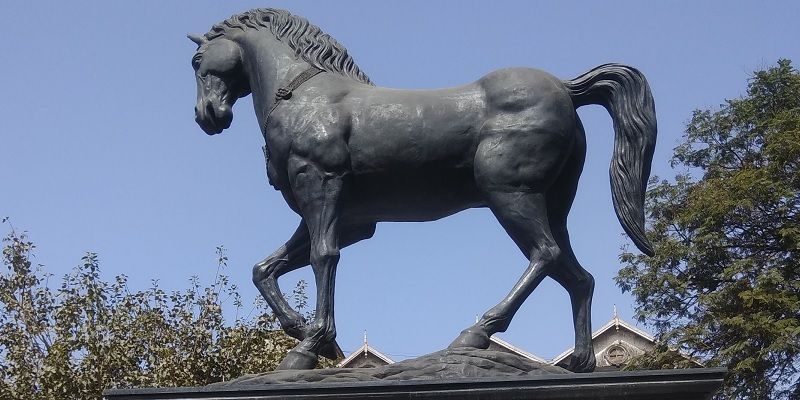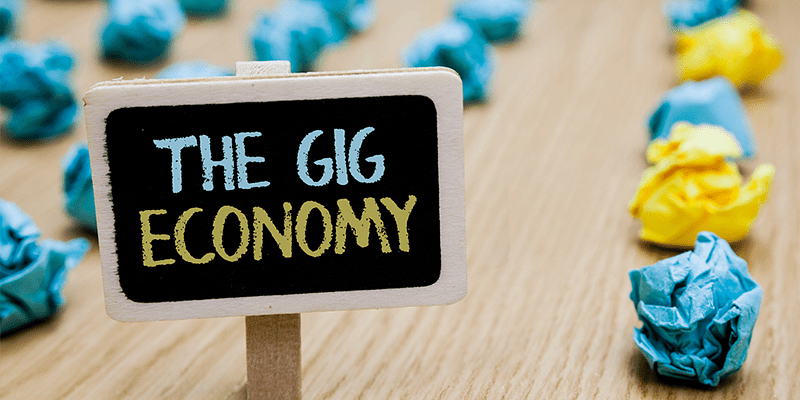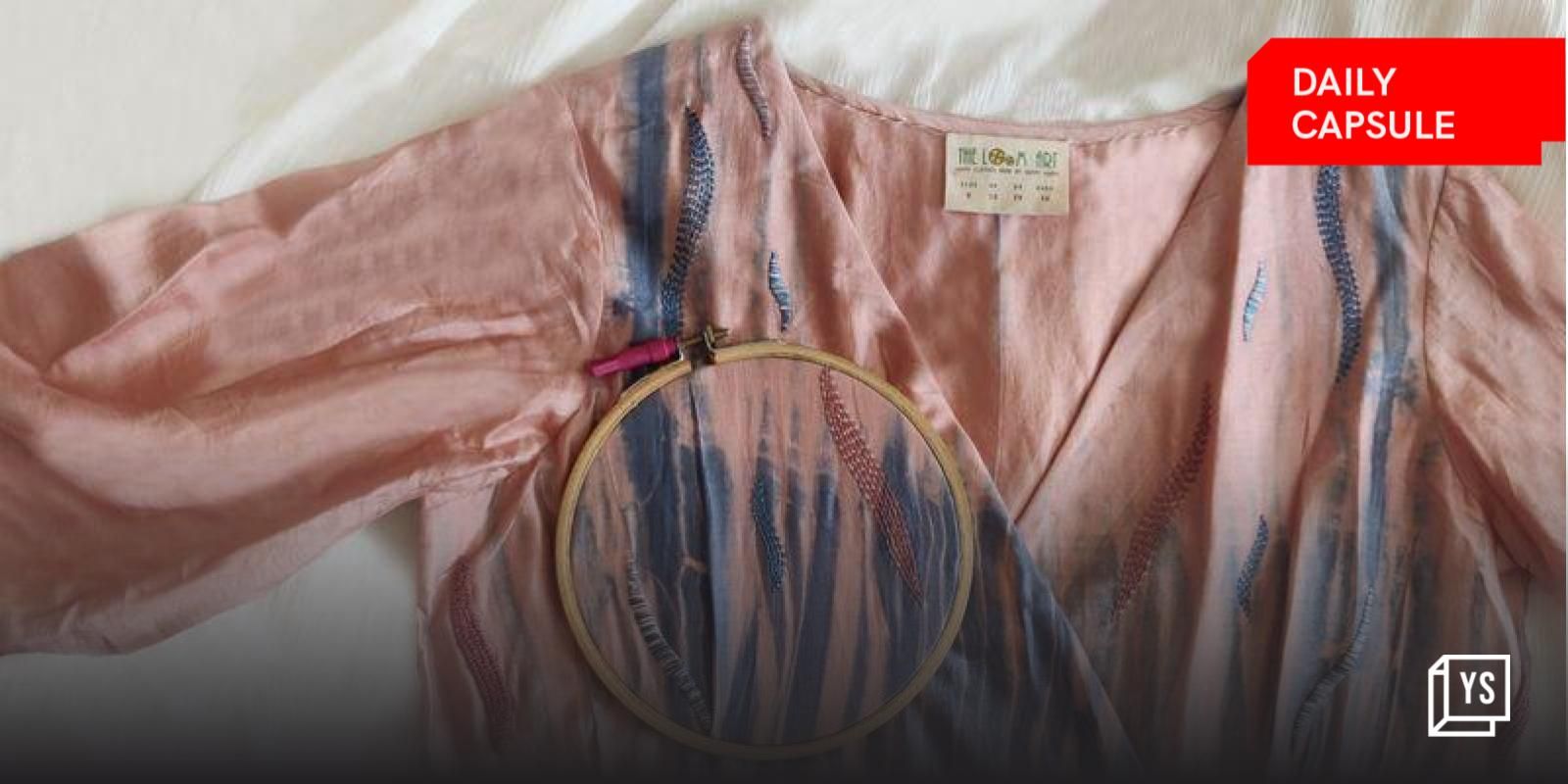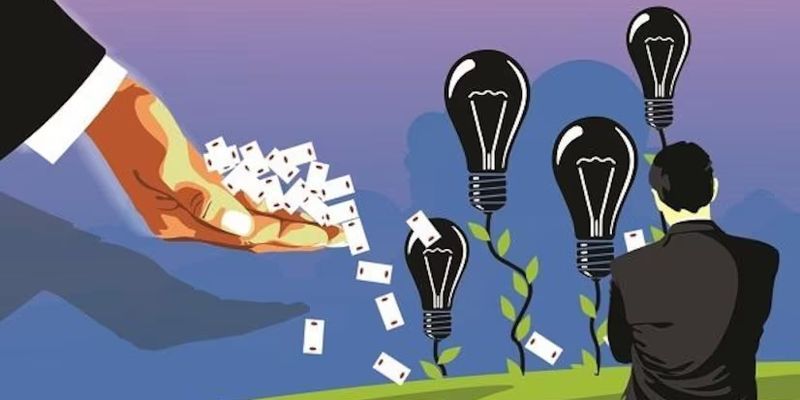Style, simplicity, substance: how Kala Ghoda Arts Festival provides imagery and inspiration for all
In the first of four photo essays on Mumbai’s Kala Ghoda Arts Festival, we share highlights of indoor and outdoor exhibits, along with artist insights.

PhotoSparks is a weekly feature from YourStory, with photographs that celebrate the spirit of creativity and innovation. In the earlier 295 posts, we featured an art festival, cartoon gallery. world music festival, telecom expo, millets fair, climate change expo, wildlife conference, startup festival, Diwali rangoli, and jazz festival.
It would take an entire team to cover Mumbai’s annual Kala Ghoda Arts Festival (KGAF), but we present some of the visual highlights in this series of photo essays. Held early February each year, the nine-day event features installations, art works, craft exhibition, literature, culinary workshops, children’s activities, theatre, dance shows, and music performances.
This year, the Kala Ghoda Arts Festival is celebrating its 20th anniversary as well as the 150th birth anniversary of Mahatma Gandhi. See YourStory’s earlier coverage of the 2018 and 2017 Kala Ghoda Arts Festival editions, as well as insights from the organisers of the 2019 edition.
As compared to other art festivals held in convention centres or repurposed streets, what makes Kala Ghoda Arts Festival unique is the venue right in the heart of the Kala Ghoda heritage district in South Mumbai. It features folk and contemporary art, in outdoor as well as indoor settings.
“Art to us is our artisans and the vast craft landscape of our country. We have a rich heritage and there is unexplored talent in remote corners of our nation that haven't yet seen the light of day,” said Pratima Sinha, co-founder of Nurture India, in a chat with YourStory during the outdoor exhibition.
“Art means finding meaning in the mundane and making it worthy of purchase,” Pratima adds. She founded Nurture India in 2017 along with her childhood friend, Somya Suresh. They have diverse educational backgrounds in fashion and finance, with a shared interest for art and business.
“All our products are hand-crafted in India, combining several creative processes to make exquisite, one of a kind products with a story. Our aim is to put India’s heritage, ideologies, culture and motifs on the world map, not just through designs, but also by fusing sustainable materials in each one of our pieces,” Pratima adds.
Participating at KGAF is a valuable and unique experience for organisations like Nurture India. “There's no other festival like KGAF in the country that promotes street art and culture at this scale. It brings in mature as well as contemporary audiences who are open to buying experimental designs and wanting to collect one-off pieces for themselves,” Pratima explains.
“Art includes bringing recognition to the various folk art forms of our country, their folklore and aesthetic sense,” says Uma Tewari, founder of craft sustainability project Then and Now. “This is our heritage and tradition. These folk art forms depict legends and mythologies. They are fast disappearing because of lack of patronage,” she adds.
“Let us preserve them by recognition and support rather than buying plagiarised, digitally printed folk art in the garb of design, where nothing goes back to the community. That ends up driving the communities to abandon their art and take up alternate livelihoods for survival,” Uma urges.
KGAF also gives a leg up to emerging contemporary artists across the board, exploring new frontiers in forms like ceramics. “When it comes to pottery and ceramics, the masses still see it as a craft. It has evolved far beyond that,” explains Sejal Sethi, Founder of Artesania The Clay Studio. She founded the studio in 2014, and exports tableware and serve-ware to restaurants in Dubai and London.
“From the traditional potter who astonishingly makes hundreds of diya's and matka's in a day, to the ceramic artists who make mesmerising wares for utility or home decor, every single piece is a work of art that requires practice, precision and passion,” Sejal says.
“Art is about the joy of creation, not just a means to an end. Today, after more than a decade of playing with clay, I feel the same. It gives me immense satisfaction to see my work utilised in some way or another, whether it is a tea set used to serve people, a handcrafted lamp lighting up the corner, or a wall panel that completes the look of the room,” she explains.
This is her fourth year displaying at the KGAF Studio Potter's Market. “The atmosphere is always buzzing with art and innovation. It's a wonderful chance to not just display and sell your work, but to interact with other artists, and explore and get inspired by their creations,” Sejal says.
She also offers tips to aspiring artists. “Be true to your art, hone your skills, and push yourself to always do better, to take it one step further than what you have done before. But more than anything, simply enjoy what you do! Even a humble mug is truly a piece of art when created with love and passion,” Sejal explains.
In addition to outdoor exhibits, one of the highlights of KGAF is an indoor exhibition at Jahangir Art Gallery on the life of Mahatma Gandhi. “It features 66 photographs and 27 installations on Gandhi, as well as video displays. The faculty of the JJ School of Arts produced 12 sculptures,” says Varsha Karale, KGAF curator and Director of OGN Productions.
The exhibition brings out hidden aspects of Gandhiji’s life, which people may not have seen earlier, such as photographs of his college days and of his parents, according to Varsha. In addition to tolerance and purpose, the message of the commemorative exhibition is simplicity, she adds.
“Simplicity is a principle we should all take on in our day to day life. Simplicity may be hard to follow in this day and age, but it makes things easier for life,” Varsha signs off.
Now, what have you done today to open you mind to the vast creative energies of art in India, and make space and time for it to inspire you?































Got a creative photograph to share? Email us at [email protected]!
See also the YourStory pocketbook ‘Proverbs and Quotes for Entrepreneurs: A World of Inspiration for Startups,’ accessible as apps for Apple and Android devices.









![[Weekly funding roundup April 20-26] VC investment dips as startups resort to debt capital](https://images.yourstory.com/cs/2/220356402d6d11e9aa979329348d4c3e/funding-lead-image-1669386008401.jpg)

